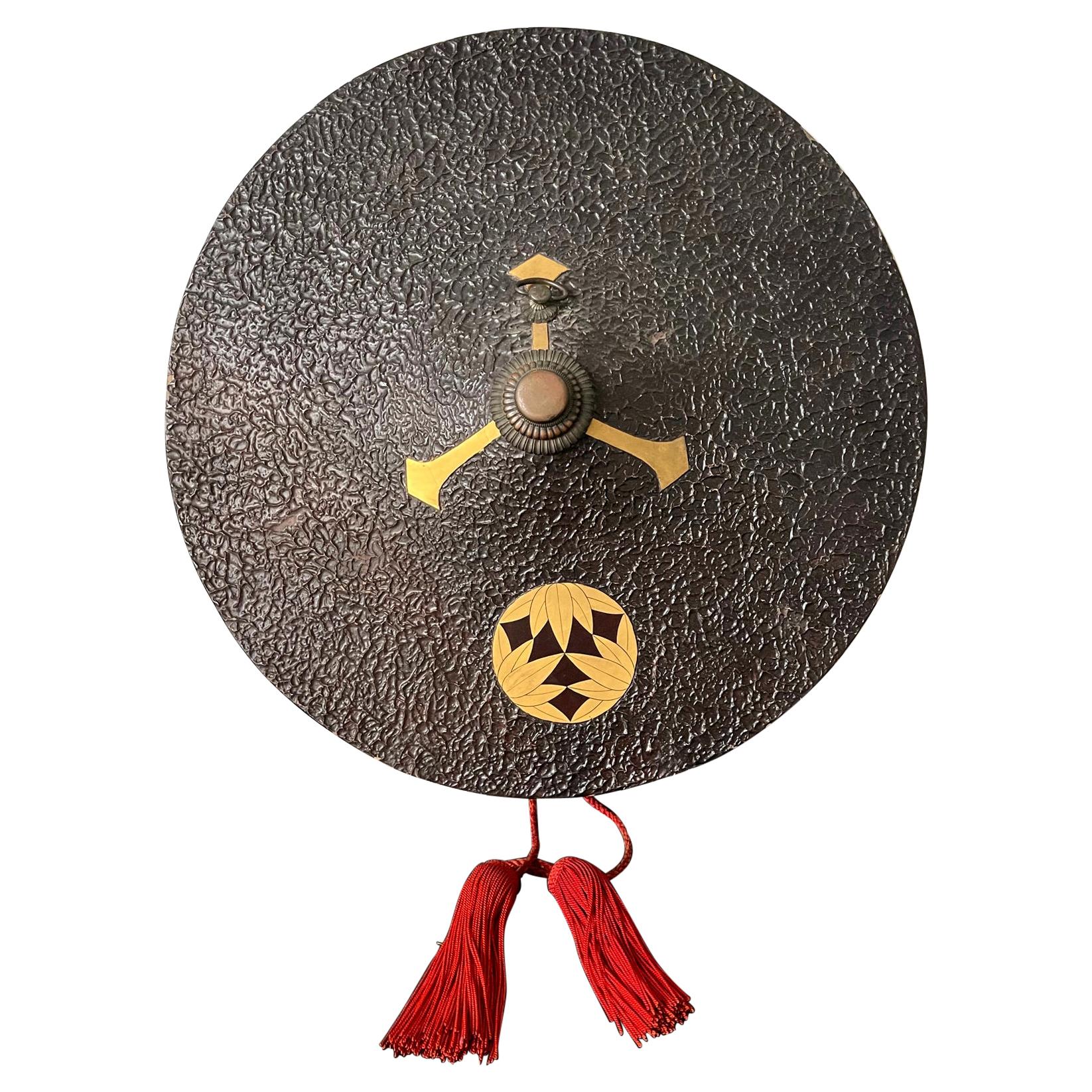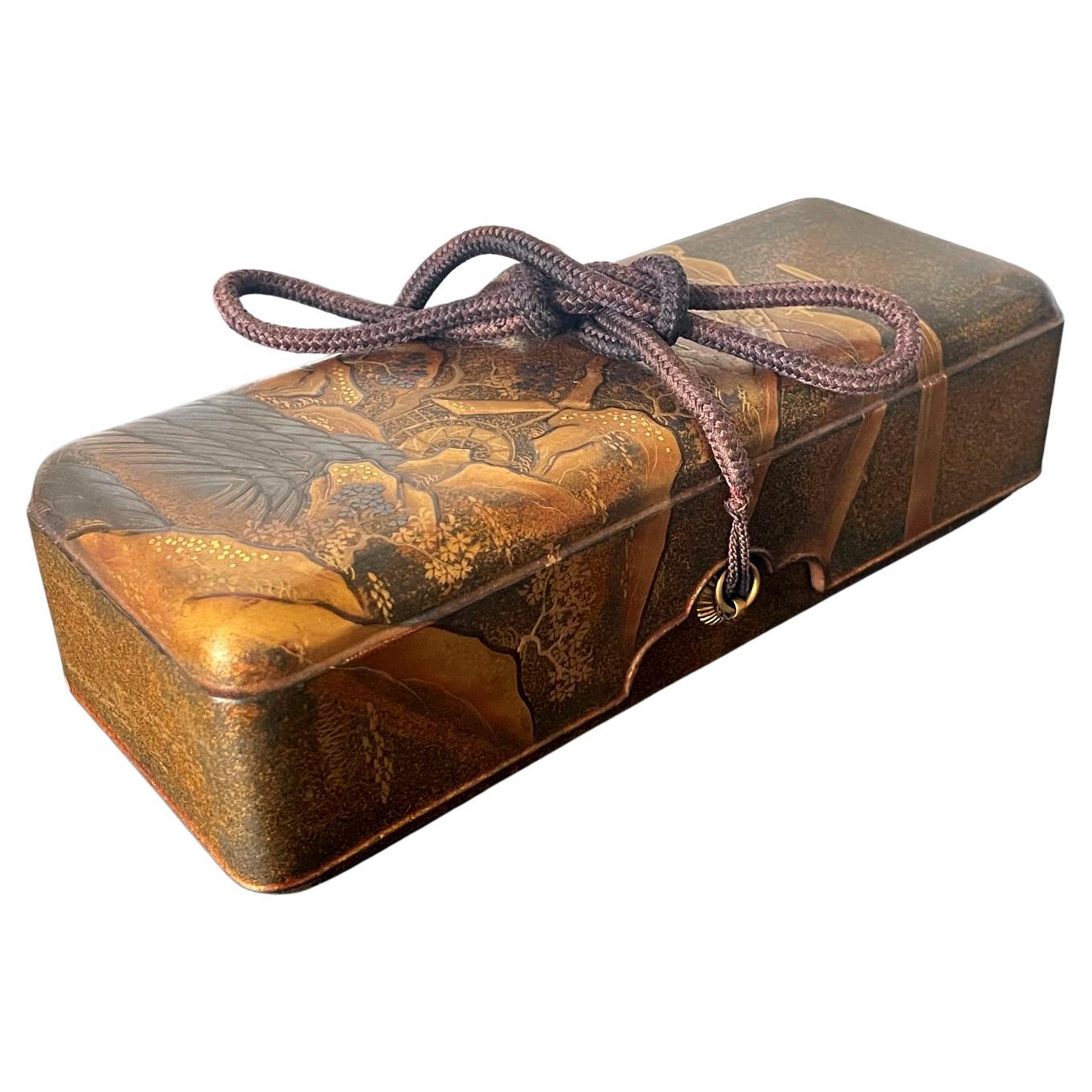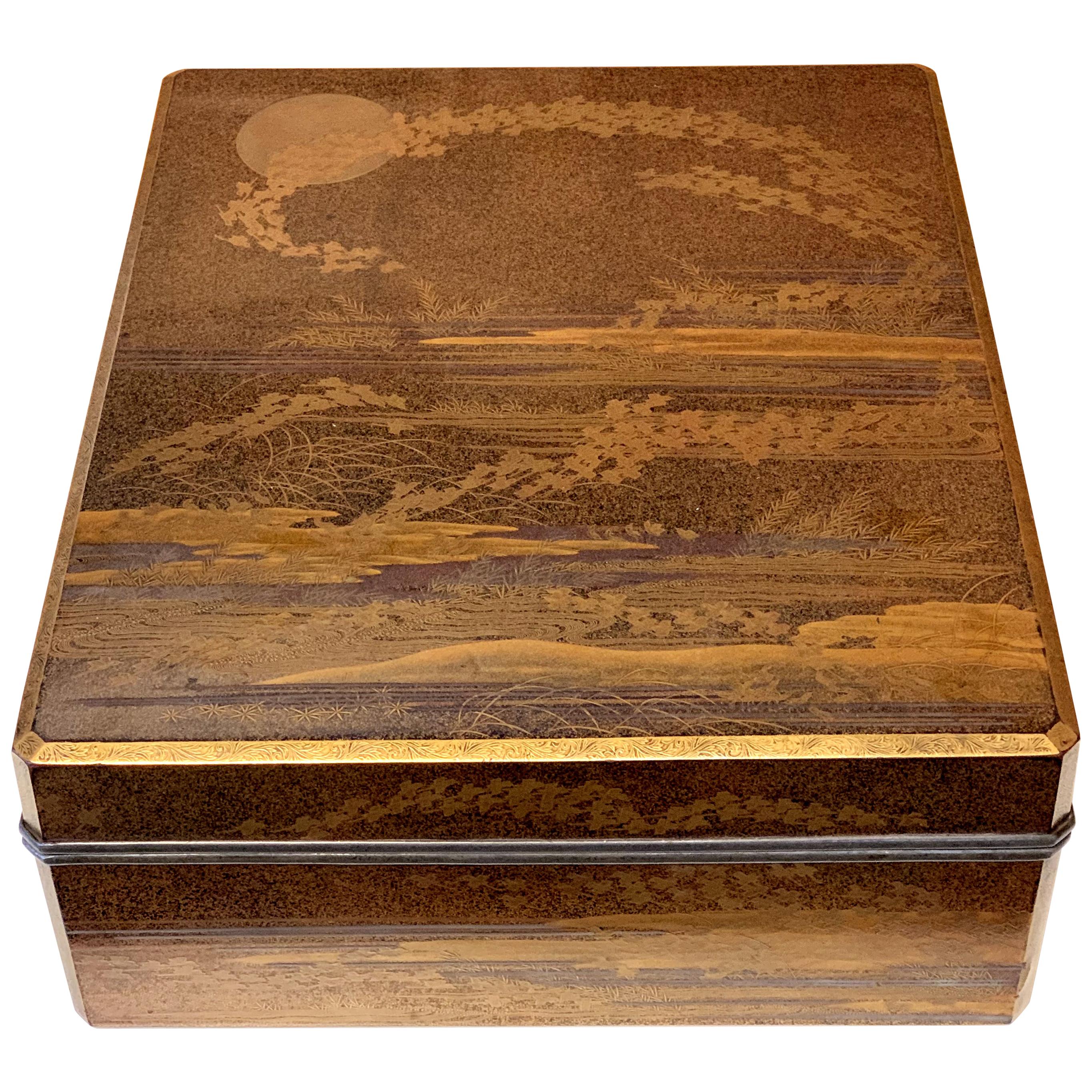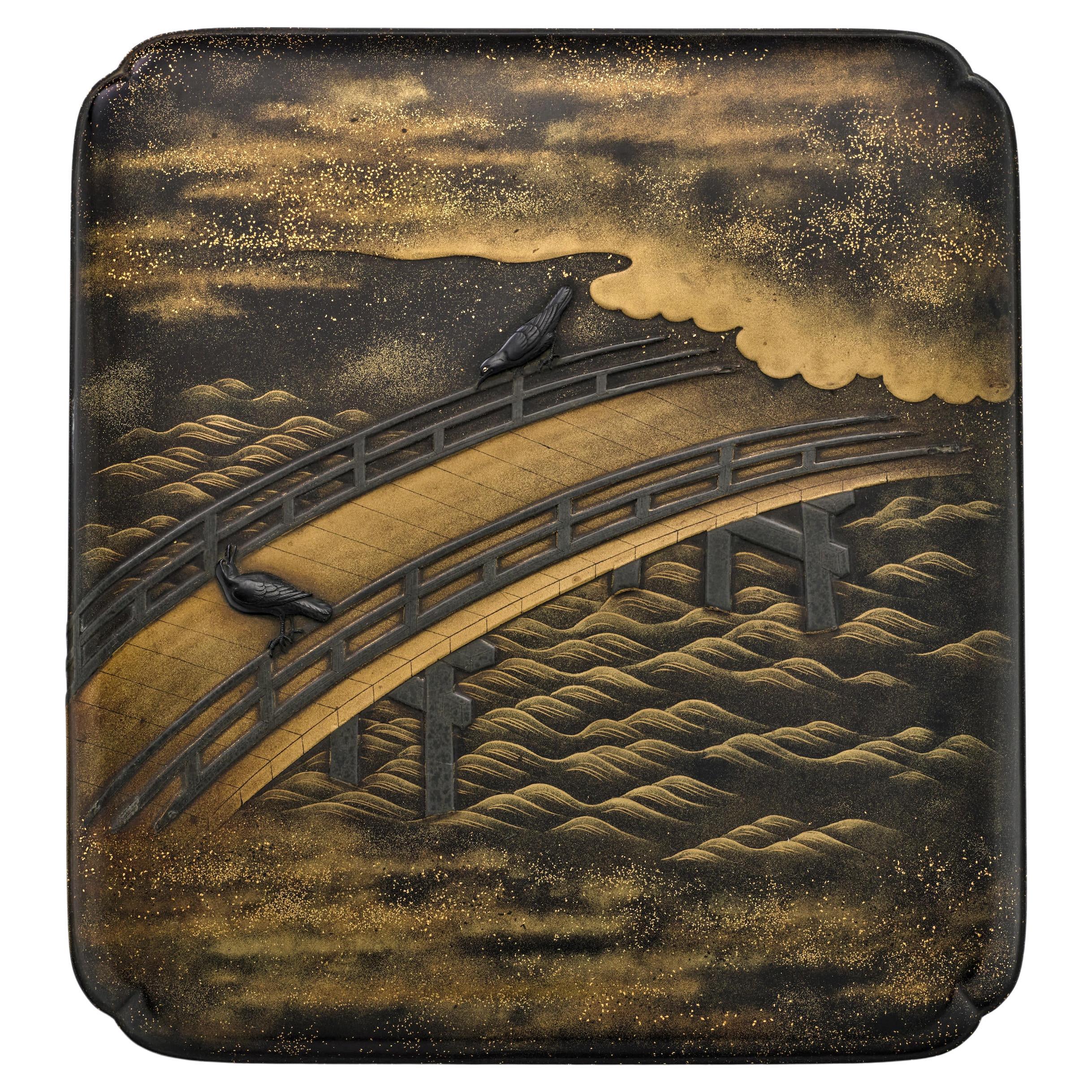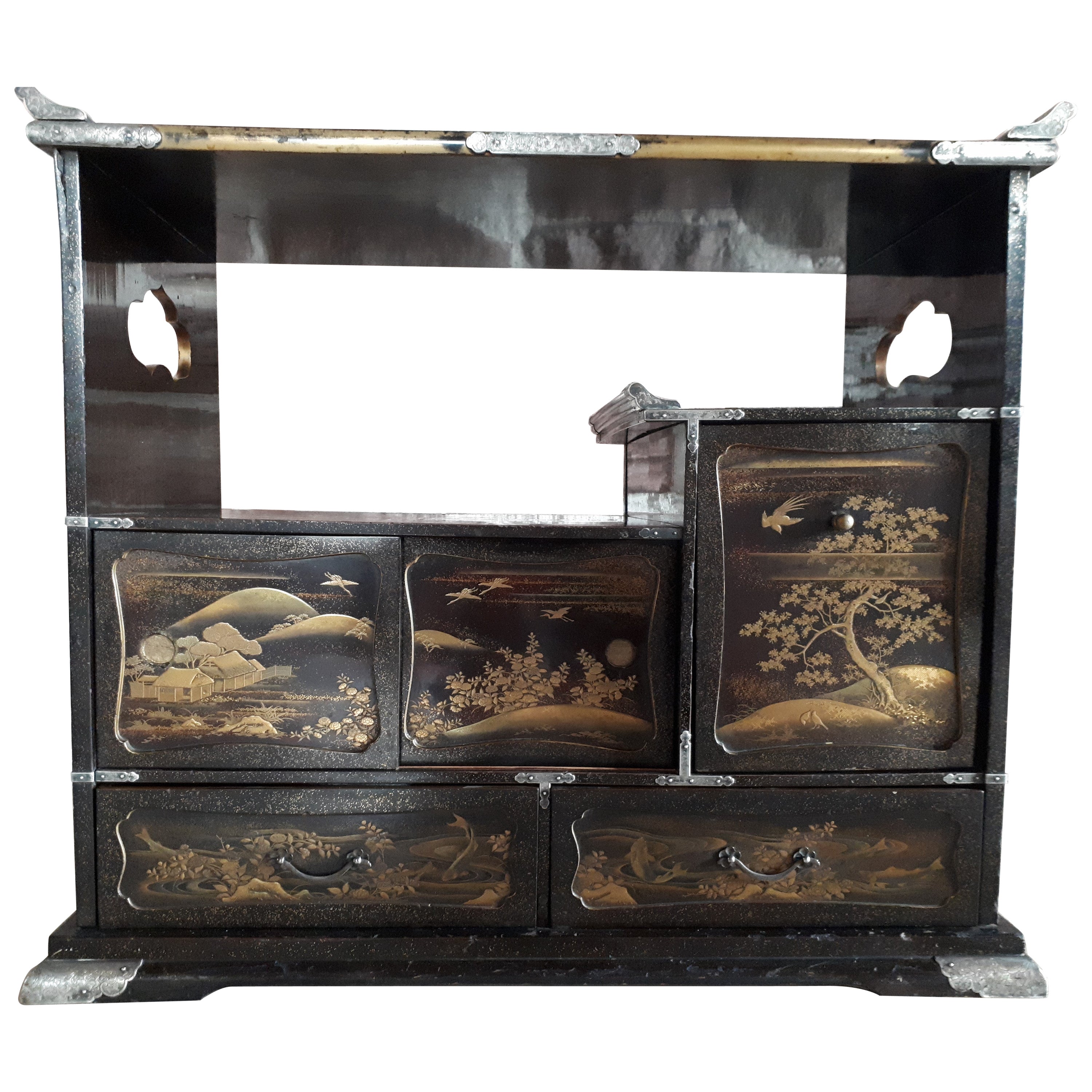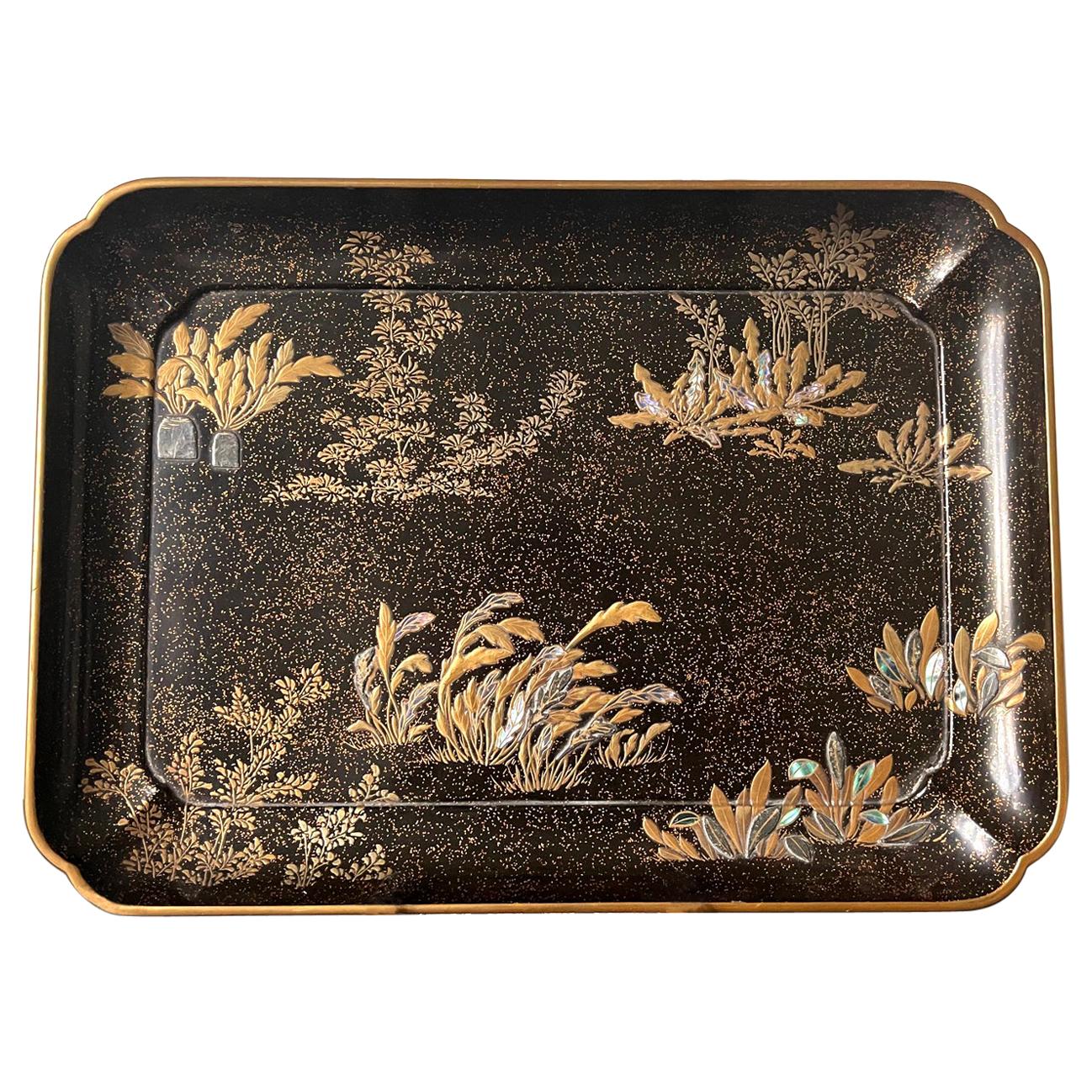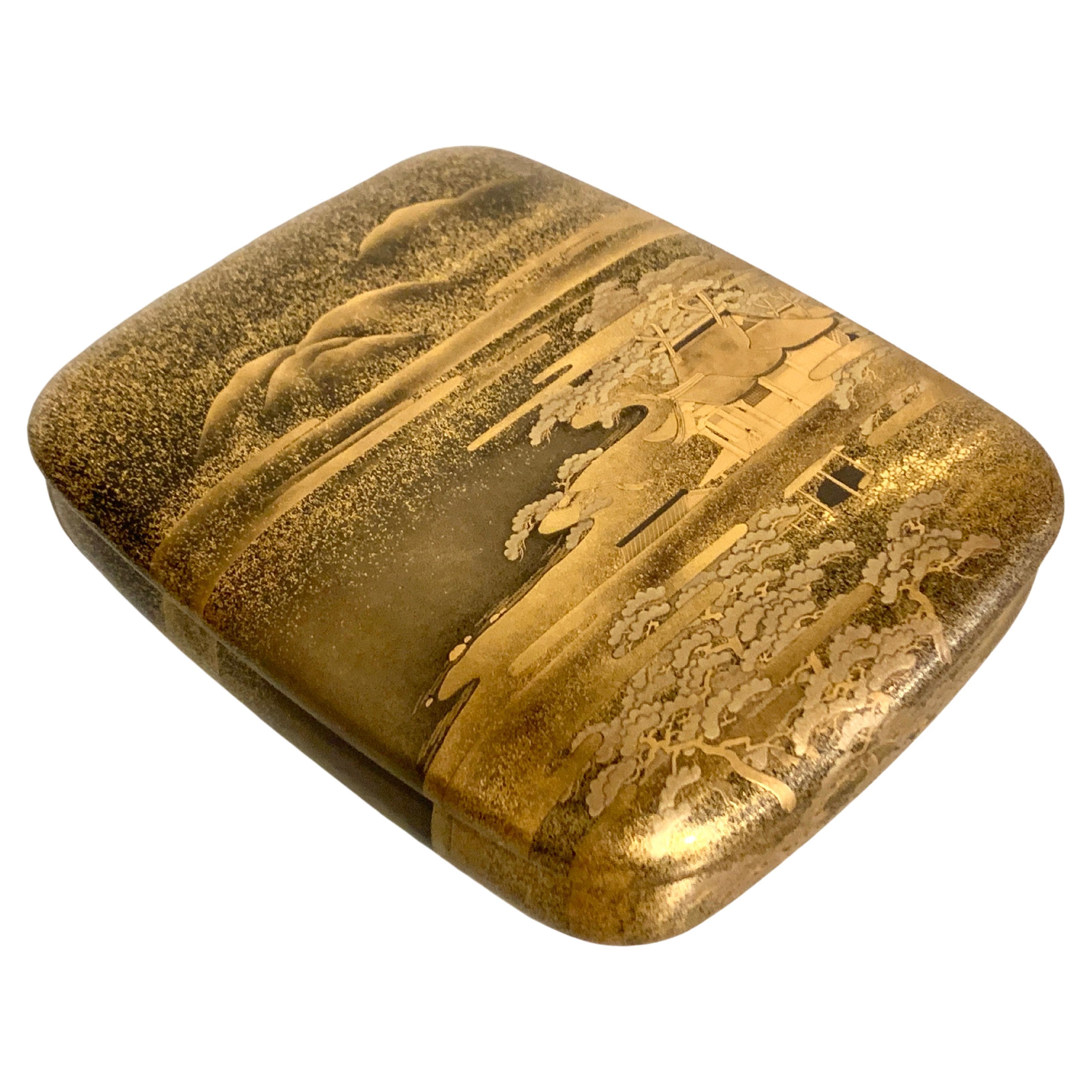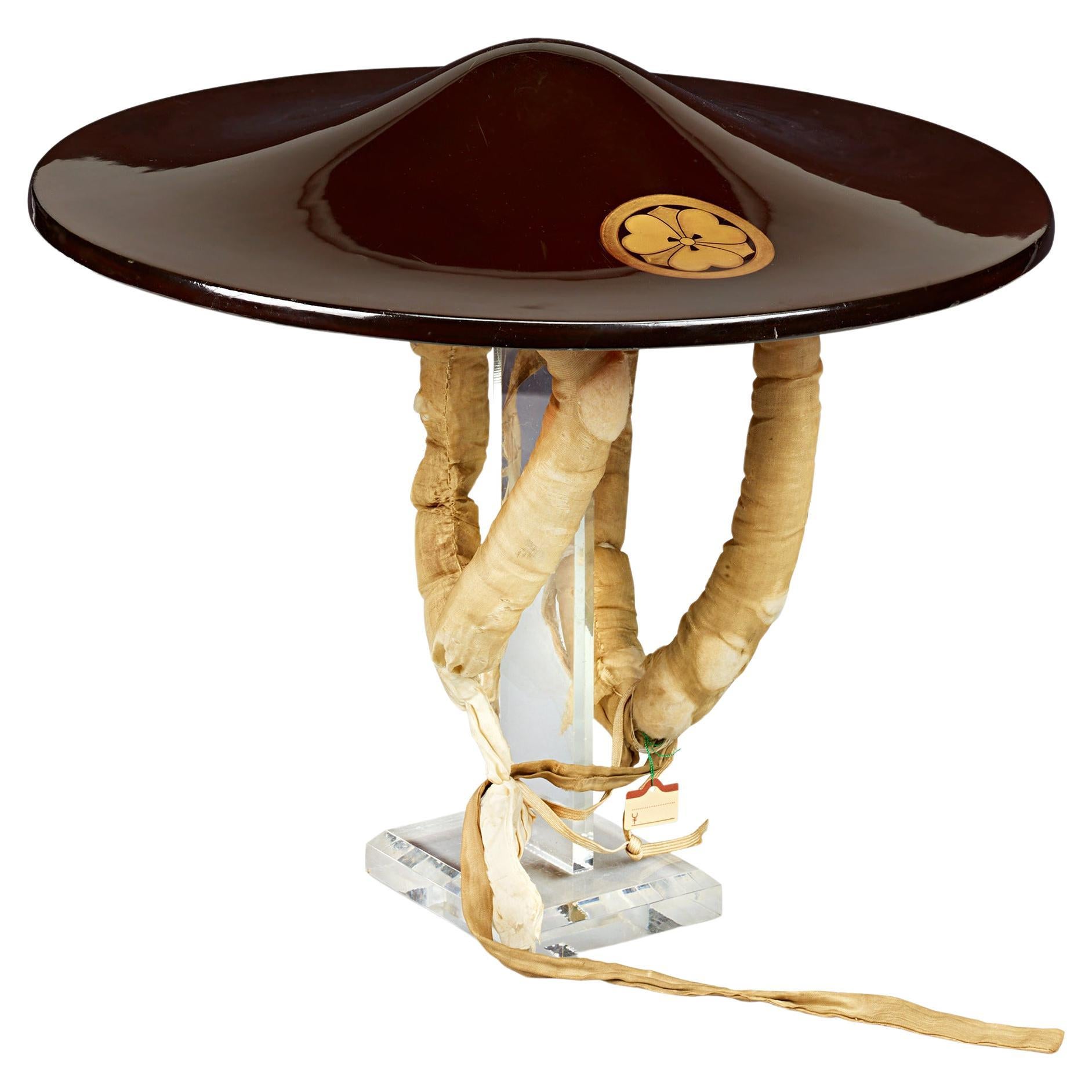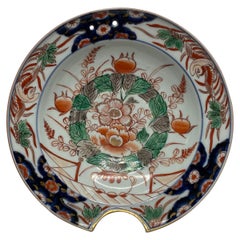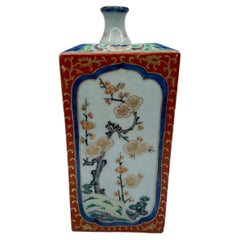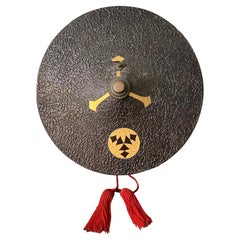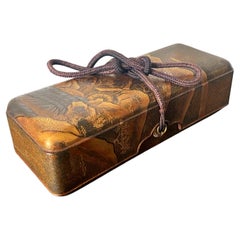
Japanese Lacquer Shishi Dog Netsuke, circa 1820, Edo Period
View Similar Items
Want more images or videos?
Request additional images or videos from the seller
1 of 8
Japanese Lacquer Shishi Dog Netsuke, circa 1820, Edo Period
About the Item
- Dimensions:Height: 1.38 in (3.5 cm)Width: 1.19 in (3 cm)Depth: 0.95 in (2.4 cm)
- Style:Japonisme (In the Style Of)
- Materials and Techniques:
- Place of Origin:
- Period:
- Date of Manufacture:circa 1820
- Condition:Wear consistent with age and use.
- Seller Location:Gargrave, GB
- Reference Number:1stDibs: LU4397116544482
About the Seller
5.0
Vetted Seller
These experienced sellers undergo a comprehensive evaluation by our team of in-house experts.
Established in 1982
1stDibs seller since 2019
44 sales on 1stDibs
Typical response time: 1 hour
More From This SellerView All
- Imari porcelain barbers bowl, Arita, Japan, c. 1700. Edo Period.By AritaLocated in Gargrave, North YorkshireJapanese Arita porcelain barbers bowl, c. 1700, Genroku Period. Well painted in Imari colours, with an exuberant display of flowering plants, in a jardini...Category
Antique 17th Century Edo Ceramics
MaterialsPorcelain
- Kenjo Imari Tokuri, Arita, Japan, circa 1700, Genroku PeriodBy AritaLocated in Gargrave, North YorkshireJapanese Imari porcelain tokuri, Arita, circa 1700, Genroku Period. The squared vessel painted with shaped panels of flowering plants, upon textile design inspired grounds. Rising to...Category
Antique Early 1700s Japanese Edo Ceramics
MaterialsPorcelain
- Kenjo Imari Ewer & Cover, Arita, Japan, circa 1700, Genroku PeriodBy AritaLocated in Gargrave, North YorkshireA fine Japanese porcelain Kenjo Imari ewer and cover, Arita, c. 1700, Genroku Period. The squared pot, painted with large panels of pavilions, in river lan...Category
Antique 18th Century Japanese Edo Ceramics
MaterialsPorcelain
- Kutani porcelain Green Pheasant, Japan, Meiji Period.By Kutani StudioLocated in Gargrave, North YorkshireKutani porcelain okimono of a Japanese Green Pheasant, Japan, Meiji Period. The pheasant modelled, perched upon a large gnarled branch. Decorated in typically vibrant enamels, and he...Category
Antique Early 1900s Japanese Meiji Ceramics
MaterialsPorcelain
- Japanese bronze tiger, signed Yoshikuza, Meiji Period.By Tosa Mitsuyoshi 2Located in Gargrave, North YorkshireJapanese bronze okimono of a tiger, signed Yoshikuza, c. 1890, Meiji Period. The prowling tiger, well modelled, with his back slightly arched. His face particularly well observed, as...Category
Antique 1890s Japanese Meiji Sculptures and Carvings
MaterialsBronze
- Kutani porcelain cat, Japan, c. 1900, Meiji Period.By Kutani StudioLocated in Gargrave, North YorkshireKutani porcelain okimono of a cat, c. 1900. Meiji Period. £490.00 Kutani porcelain okimono, Japan, c. 1900. Meiji Period. Finely modelled as a sleeping cat, its hair delineated in g...Category
Antique 1890s Japanese Meiji Ceramics
MaterialsPorcelain
You May Also Like
- Japanese Lacquered Samurai Jingasa Hat Edo PeriodLocated in Atlanta, GAA bespoken Japanese historical hat known as Jinggasa (militant hat) that was worn by samurai in Edo period (1603-1868) circa 18-19th century. There were several subtypes of Jingasa a...Category
Antique 19th Century Japanese Japonisme Lacquer
MaterialsWood, Lacquer
- Rare Japanese Sumi-E Lacquer Inro Yamada Jokasai Edo PeriodLocated in Atlanta, GAA three-case lacquered Inro by Yamada Family circa 18th-19th century Edo period. The inro with slight rounded form is of Kano style and vividly depicts a dragon slithering among the ink clouds on a gold background. Sumi-e togidashi (ink togidashi) technique, in combination with Hiramaki-e, were employed to create the dreamy ambience of this piece. The dragon has a painterly appearance inspired by Chinese ink painting that was often seen on the Japanese folding screens. The back of the Inro was sparsely decorated with the shifting patterns of the darkening clouds with an emphasis on the space intentionally left empty. Jokasai was signed to the base. On the front of the inro there is another miniature signature Hakugyoku Hogen, which is one of names used by Kano Michinobu (1730-1790). The dragon is evidently one of his designs (see reference below). Established by a member of Yamada family in the 17th century, the clan was one of the most prominent lacquer artisanal family for the next 200 years until the end of Edo period in the 19th century. Most members signed their work simply with Jokasai making the identification of the individual artists somewhat impossible. The current Inro on offer, compared to many other pieces by Jokasai, has an uncommon Kano style done in Sumi-e togidashi. Another unusual feature of this piece is that the interiors of the inro was decorated with an interesting gold mosaic inlays (kirigane) on a dark lacquer background, giving it a jewel like quality. For another Inro by Jokasai of a similar style using Sumi-e togidashi but depicts a tiger, see Wrangham collection, no.353, which was offered for sale as lot 256 in Bonham's London Auction: The Edward Wrangham Collection of Japanese Art Part I. 9 Nov 2010. For an ink scroll...Category
Antique 18th Century Japanese Japonisme Lacquer
MaterialsWood, Lacquer
- Japanese Lacquered Maki-e Fubako Edo PeriodLocated in Atlanta, GAA Japanese lacquered wood fubako (a box used to store document or small scroll painting), circa second half of 19th century late Edo period. The rectangular box features an unusually deep lipped lid with slightly rounded corners, a conforming lower box that is almost entirely covered by the lid which has two bronze medallion rings with tasseled...Category
Antique 19th Century Japanese Edo Lacquer
MaterialsWood, Lacquer
- Large Japanese Lacquer Box Early Edo Period Ex-Christie'sLocated in Atlanta, GAA large lacquer Ryoshibako (Paper box in Japanese) finely decorated with Maki-e circa 17th century early Edo period. The box is of an impressive size and was used to store paper documents. Both sides of the lid were elaborately decorated with maki-e and the edge was befitted with lead rim, an early practice before the silver rim became common later. The interior and base were finished in Nashiji. The night scene on top surface of the lid depicts flocks of chidoris flying in formation from a sea shore swaying with reeds under a full moon, using hiramaki-e in both gold and silver. Ribbons of clouds were achieved with different densities of gold powder. The underside, in contrast, shows a crescent moon in takamakie-e above the sea with ferns and reeds. Chidoris, the plovers, are symbolic in Japanese culture as "thousands of blessings" and longevity. The Namichidori, the pattern in which the chidori flies in the nami (wave) represents the eternal love and safety of couples and families. For detailed references on the historical background and the use of chidoris on lacquerware, see the reference below. This very lacquer box was featured for sale as lot 339 in Christie's London Sale Japanese Art...Category
Antique 17th Century Japanese Japonisme Lacquer
MaterialsWood, Lacquer
- Japanese Antique Ewer Lacquer with Bronze Edo to Meiji PeriodLocated in Atlanta, GAA Japanese lacquer water ewer without handle (known as hazo in Japanese) that was used to carry water, traditionally together with a large basin (known as tsunodarai) for domestic us...Category
Antique 19th Century Japanese Japonisme Lacquer
MaterialsBronze
- Exquisite Japanese Lacquer Maki-e Suzuribako by Koma Kyūhaku Edo PeriodLocated in Atlanta, GAOne of the finest Japanese Maki-e Suzuribakos (ink box) we have on offer, the roiro color box showcases an ambient nocturnal scene in which two shakudo inlaid crows perched on the handrails of a bridge (possible the Uji Bridge...Category
Antique Early 19th Century Japanese Japonisme Lacquer
MaterialsStone, Metal
Recently Viewed
View AllMore Ways To Browse
Netsukes
Japanese Netsuke
Antique Netsukes
Japanese Shishi
Carves Netsuke
Carved Netsuke
Asian Netsuke
Japanese Carved Dog
Edo Dog
Japanese 19th Century Lacquer
Red And Gold Lacquer
Japanese Lacquer Gold
Black Lacquer With Gold Art
Japanese Red Lacquered
Japanese Lacquer Red
Asian Lacquered Box
Asian Lacquer Box
Tray Japan
